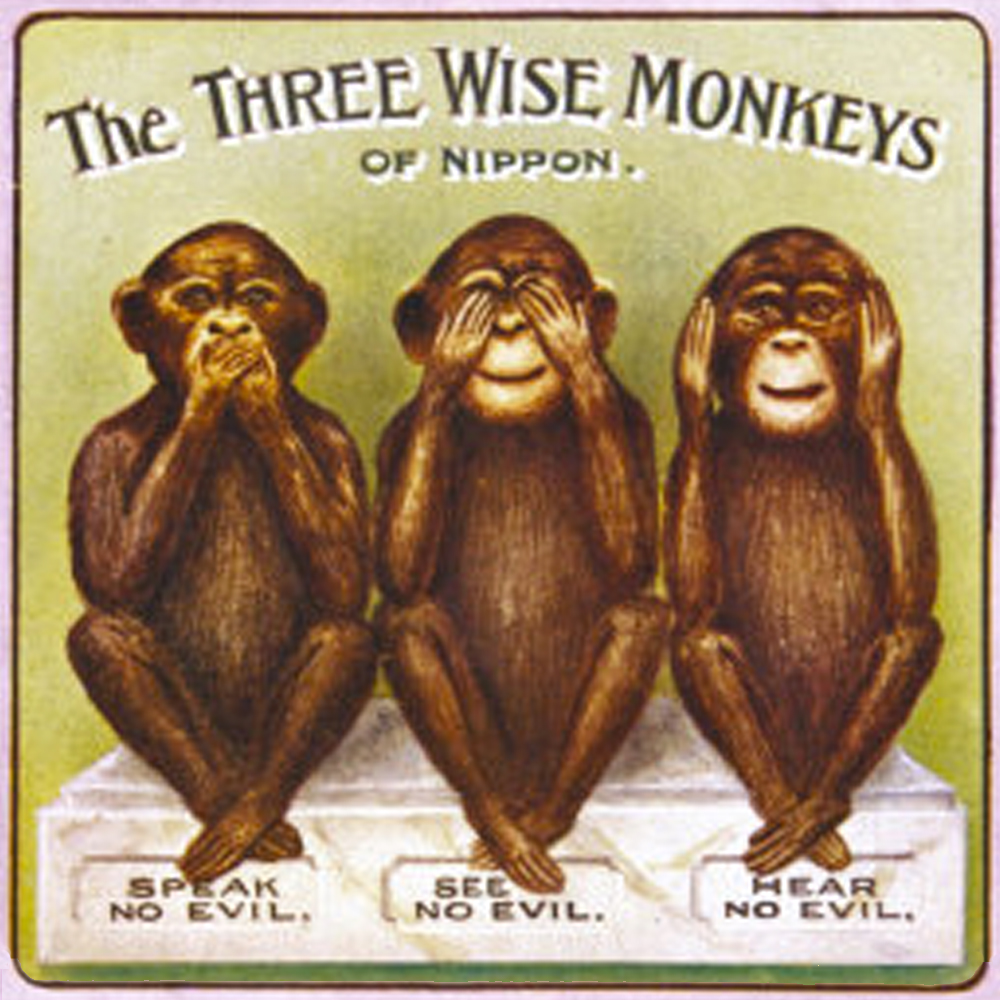
The Three Wise Monkeys (Οι 3 Σοφοί Πίθηκοι) WiseHome.gr
The three wise monkeys: Mizaru, Kikazaru, and Iwazaru. The famous Tōshō-gū shrine in Nikkō, Japan, is home to a piece of art known by the entire world. A carving of the three wise monkeys has been proudly placed above the door of the shrine ever since the 17th century. Made by the sculptor Hidari Jingoro, the carving is a pictorial maxim of.

THREE WISE MONKEYS stock illustration. Illustration of inheritance 2716871
The three wise monkeys are a pictorial maxim, embodying the proverbial principle "see no evil, hear no evil, speak no evil". The three monkeys are Mizaru, covering his eyes, who sees no evil; Kikazaru, covering his ears, who hears no evil; and Iwazaru, covering his mouth, who speaks no evil.

Three Wise Monkeys Statue Bronze Color Three Monkeys Etsy
The three monkeys in the story behind the famous proverb are Mizaru, Kikazaru, and Iwazaru. In Japanese culture, these monkeys are often called the Three Wise Monkeys or the Three Mystic Apes. The three monkeys, originating from this Buddhist story, teach the importance of having good thoughts, speaking kindly, and doing good deeds.
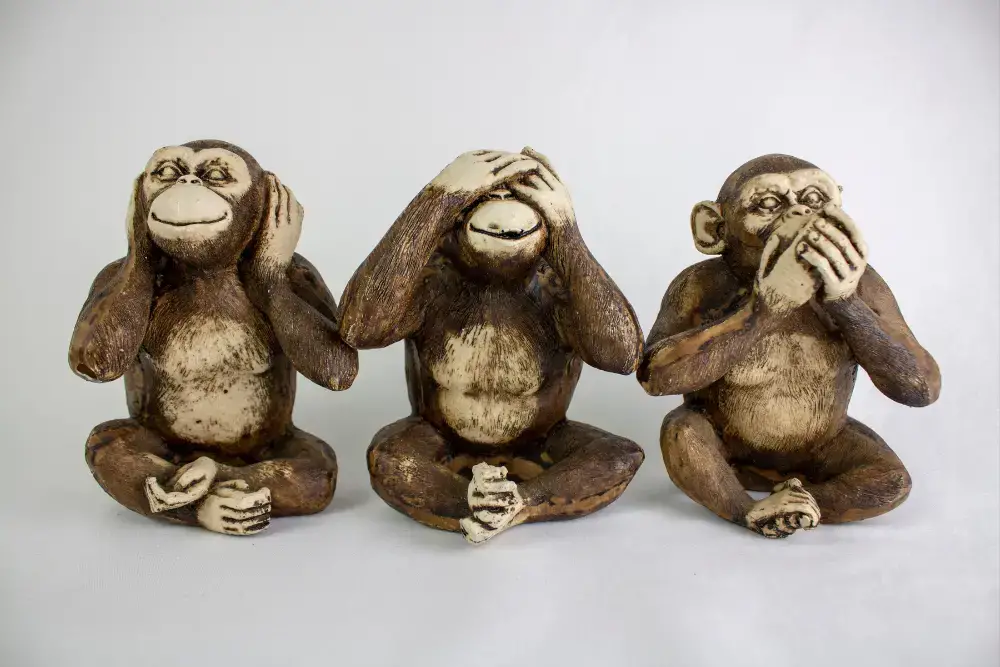
The Meaning and Origin of the Three Wise Monkeys Tattoo Design Psycho Tats
Just mizaru, kikazaru, iwazaru, not seeing, not hearing, not speaking. Also, in Japanese they're called the three monkeys, sanzaru (三ざる). The word wise isn't in there at all. Famous Depiction in Toushou-gu in Nikko. One of the most famous depictions of the three monkeys is at Toushou-guu (東照宮) in Nikko (日光). This grand.

Three Wise Monkeys and Its Paradoxical Symbolism
The Three Wise Monkeys are symbolic of several different things: - Ethics: The monkeys remind us to be ethical and not to engage in unethical behavior. - Gossip: The monkeys urge us not.

Three Wise Monkeys Gandhiji's Monkeys, THREE WISE MONKEYS GANDHIJI'S MONKEYS
Each of the three wise monkeys has their own identity: Kikazaru (the monkey who does not hear), Iwazaru (the monkey who does not speak) and Mizaru (the monkey who does not see). All of them They were sent by the gods as observers and messengers between the world of the gods and the human world.

Three Wise Monkeys Manipal Digital
The three wise monkeys are a Japanese pictorial maxim, embodying the proverbial principle " see no evil, hear no evil, speak no evil ". [1] The three monkeys are Mizaru ( 見ざる ), who sees no evil, covering his eyes Kikazaru ( 聞かざる ), who hears no evil, covering his ears Iwazaru ( 言わざる ), who speaks no evil, covering his mouth. [2]

Quotes about Three wise monkeys (20 quotes)
Overview Three Wise Monkeys Quick Reference Small statuettes of three monkeys, one covering his eyes, another his ears, and another his mouth, have been popular in Britain since (probably) the 1900s; they are known to have been carried as lucky charms by soldiers in the First World War.
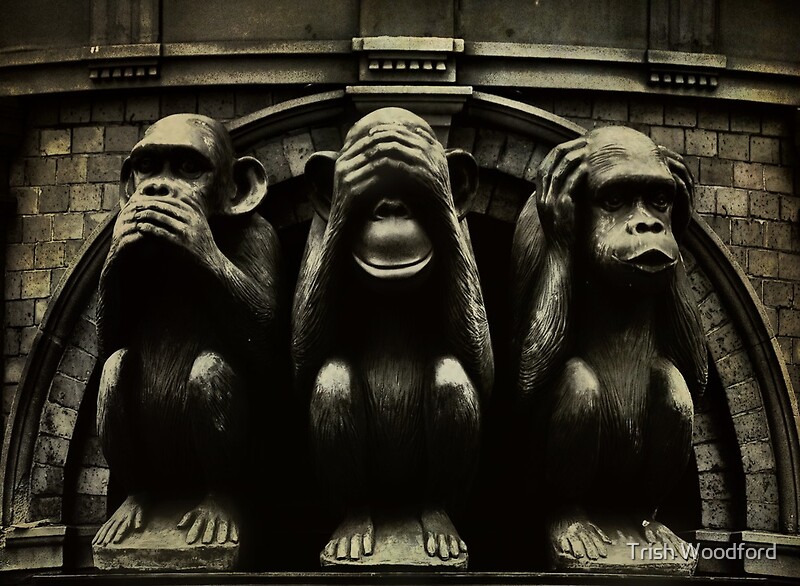
"Three Wise Monkeys" Posters by Trish Woodford Redbubble
The legend of the three wise monkeys has its origin in Chinese mythology. It tells a striking story starring three curious characters. The protagonists are Kikazaru, the monkey that doesn't hear, Iwazaru, the monkey that doesn't speak and Mizaru, the monkey that doesn't see.
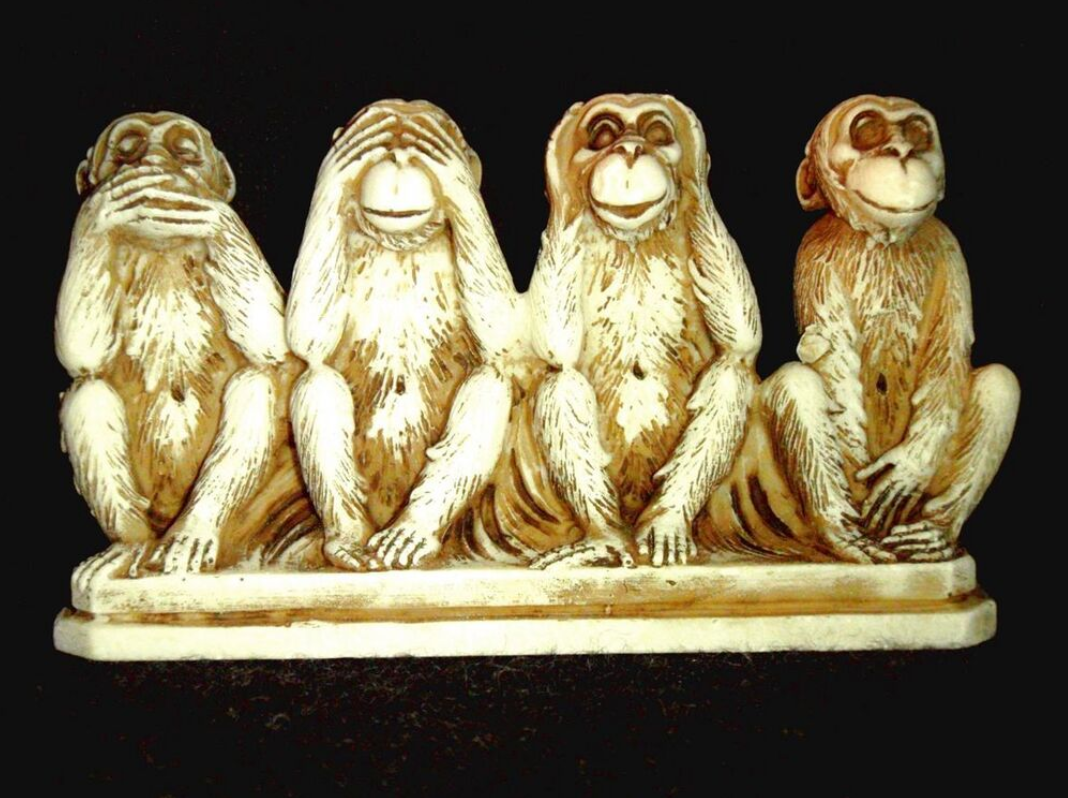
Three Wise Monkeys Encyclopedia MDPI
4 minutes. The three wise monkeys metaphor comes from a pictorial maxim by Confucius that encourages one's refusal to see, hear, or talk about evil things. This would guarantee happiness in life. Most people have seen the three wise monkeys before. It's usually the image of three monkeys: one covering its mouth, one covering its ears, and the.

3 Wise Monkeys Learning In Life
From Longman Dictionary of Contemporary English Three Wise Monkeys, the the Three Wise Monkeys ˌThree Wise ˈMonkeys, the three monkeys who are shown in pictures sitting in a row. The first has its hands covering its eyes, the second has its hands covering its ears, and the third has its hands covering its mouth.
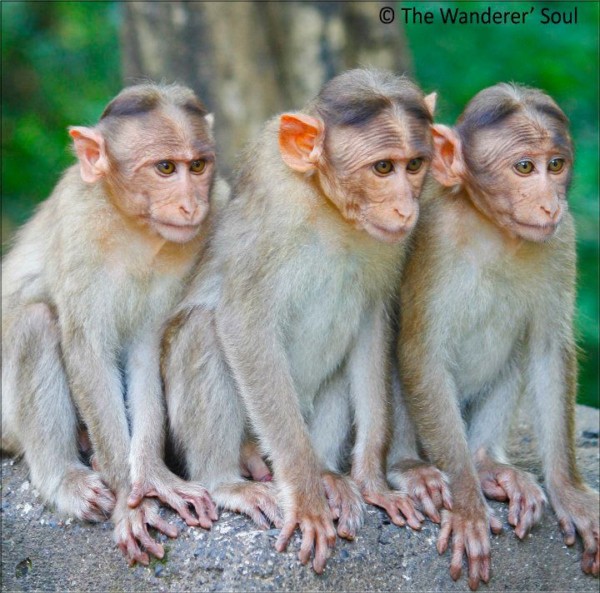
The Three Wise Monkeys iTravel
The three wise monkeys represent the moral message of not looking at, listening to, or saying anything evil, as well as to be morally upright in the face of any evil. However, the proverb is sometimes used sarcastically to those who turn a blind eye to something morally or legally wrong.

The Three Wise Monkeys • Alexandria Blaelock
The 2nd of October is a day to embrace the timeless teachings of Mahatma Gandhi. One of his most famous lessons - 'See No Evil, Hear No Evil, Speak No Evil' - was made popular by the proverbial three monkeys, Bapu, Ketan and Bandar. When we're constantly exposed to evil, we don't realize the damage it does. The purpose of these monkeys is to help us let go of the evil we wish to.

The Three Wise Monkeys Jonathan's PHILATELY blog
4 minutes You've probably seen the famous image of the three wise monkeys. But did you know the real meaning behind it? The classic story of the three wise monkeys from the Tōshō-gū shrine has a simple, timeless lesson: we have be careful what we say, hear, and see. This famous shrine is in Japan.

The Three Wise Monkeys and Its Paradoxical Symbolism SymbolSage YouTube
Three Wise Monkeys illustrated the idea of protecting one's self from unsavory or challenging behavior, thought, or language.

Three monkeys image Real meaning YouTube
Its most notable panel is the "Three Wise Monkeys," which depicts three Japanese macaques representing the principle of not seeing (Mizaru), not hearing (Kikazaru), and not saying (Iwazaru.